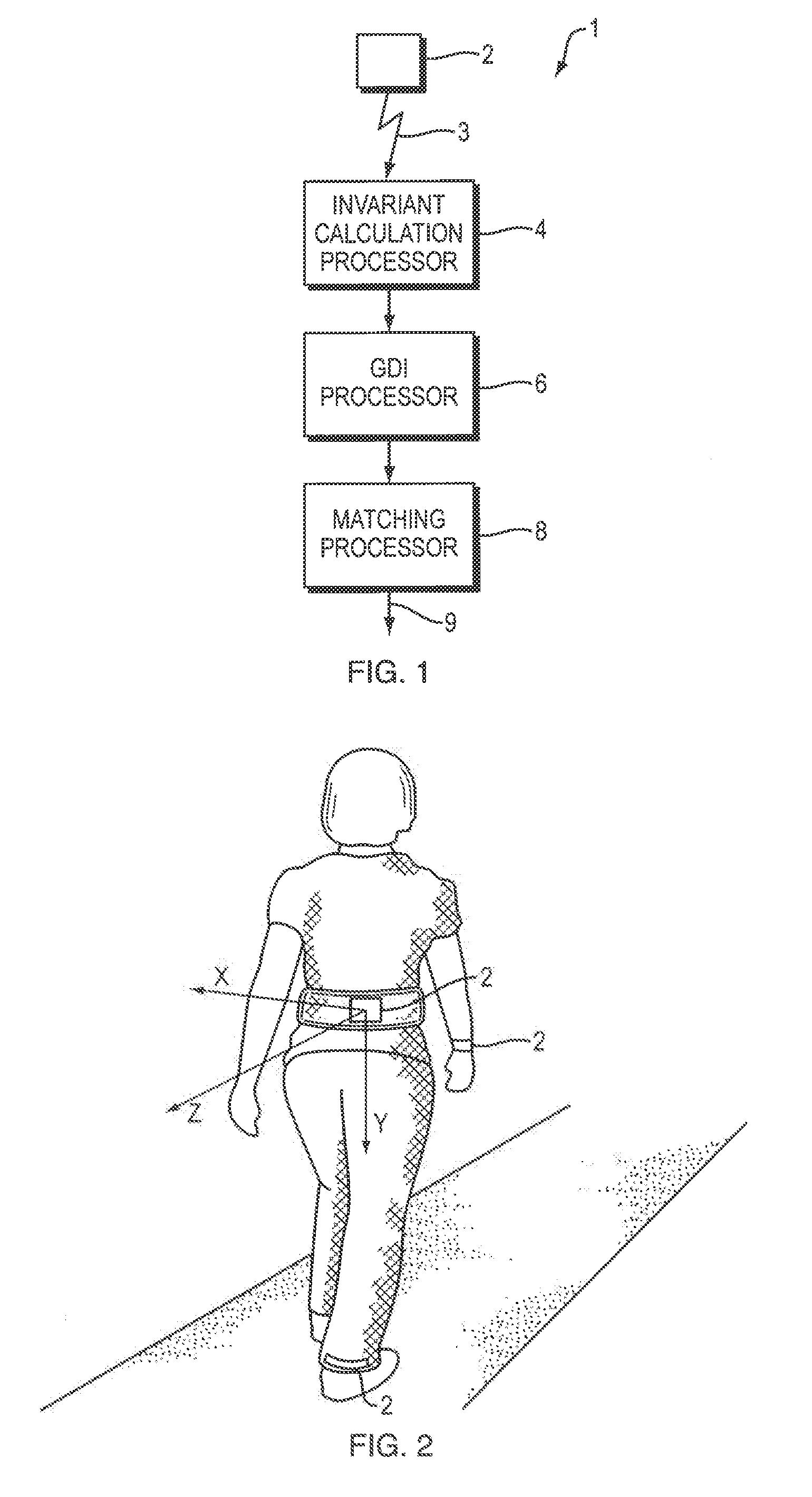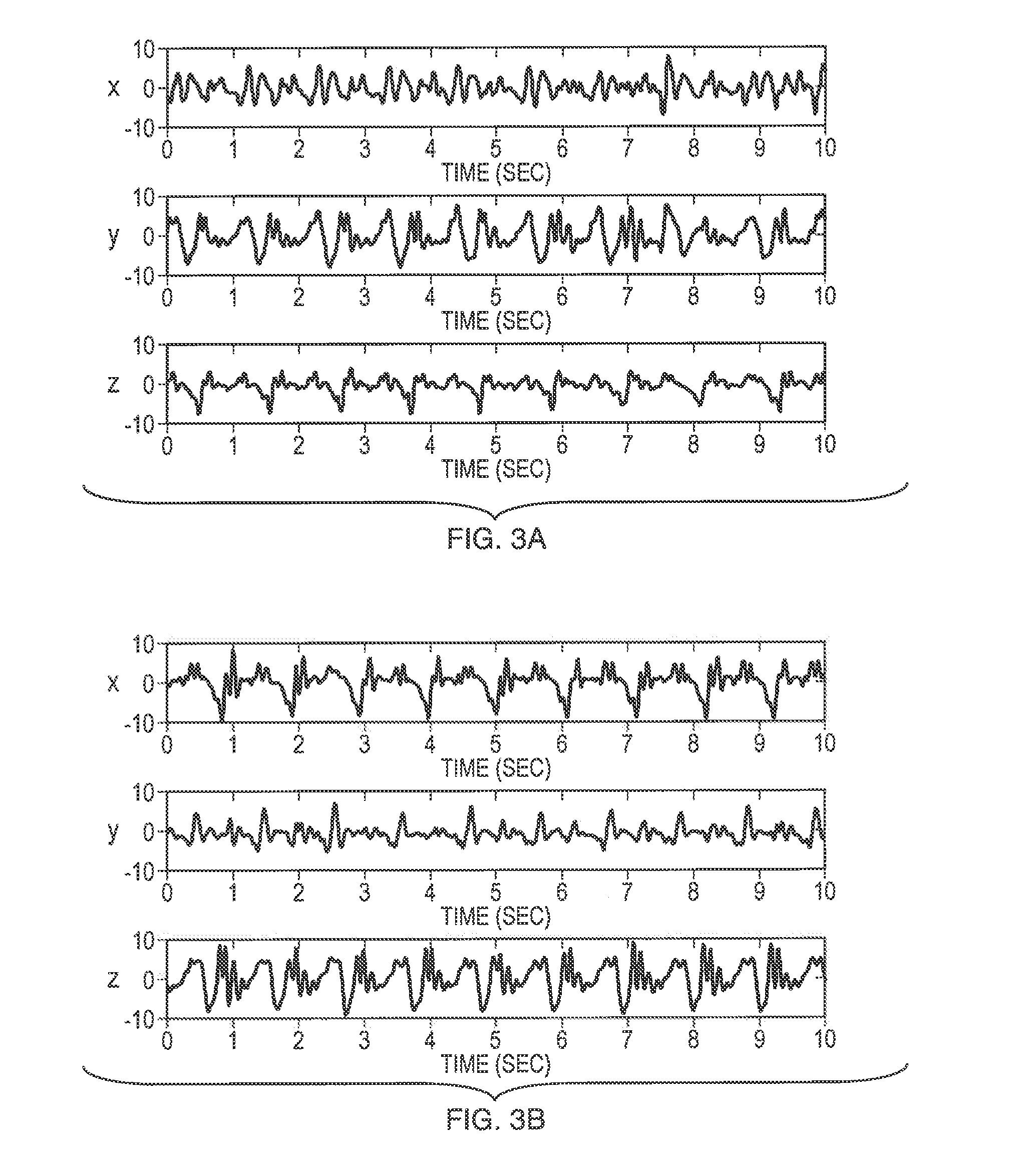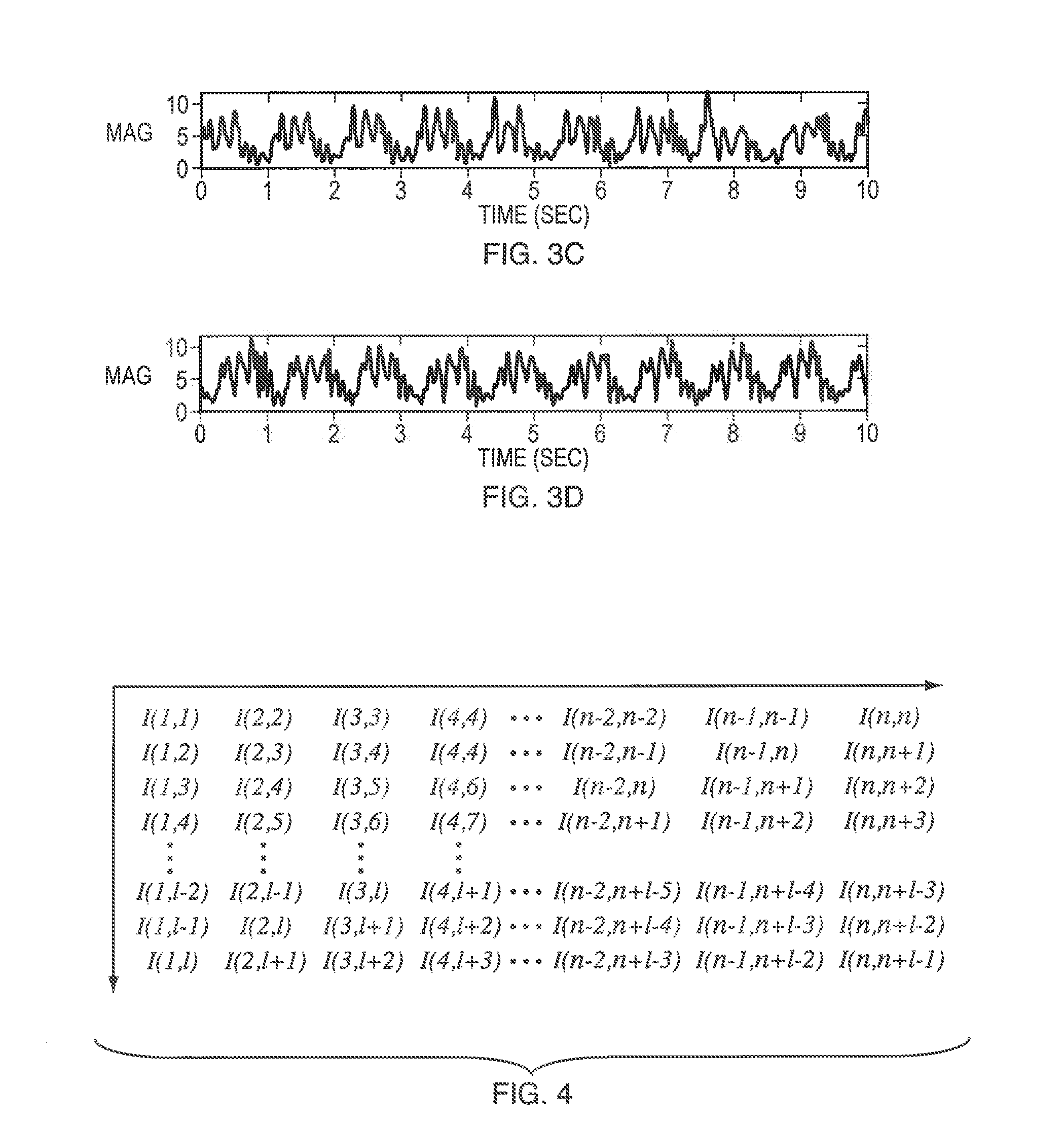Rotation and pace independent mobile gait analysis
a mobile gait analysis and rotational technology, applied in the field of rotational and pace independent mobile gait analysis, can solve the problems of inability to control the lighting conditions of the environment, the approach is, in general, susceptible to variations in viewing geometry, background clutter, and inability to adjust the orientation and pa
- Summary
- Abstract
- Description
- Claims
- Application Information
AI Technical Summary
Benefits of technology
Problems solved by technology
Method used
Image
Examples
Embodiment Construction
[0045]Accelerometers embedded in mobile devices have shown great potential for non-obtrusive gait biometrics by directly capturing a user's characteristic locomotion. Although gait analysis using these sensors has achieved highly accurate authentication and identification performance under controlled experimental settings, the robustness of such algorithms in the presence of assorted variations typical in real world scenarios remains a major challenge. In this disclosure, we provide a pace independent mobile gait biometrics algorithm that is insensitive to variability in walking speed. This approach exploits invariant mobile gait representations independent of inertial sensor rotation.
[0046]Mobile gait biometrics is a valuable tool for identifying an individual in a number of applications. Biometrics allows for not only identification, but authentication. By using mobile gait analysis, authentication could be seamless for a number of wearable technologies. Another application for mo...
PUM
 Login to View More
Login to View More Abstract
Description
Claims
Application Information
 Login to View More
Login to View More - R&D
- Intellectual Property
- Life Sciences
- Materials
- Tech Scout
- Unparalleled Data Quality
- Higher Quality Content
- 60% Fewer Hallucinations
Browse by: Latest US Patents, China's latest patents, Technical Efficacy Thesaurus, Application Domain, Technology Topic, Popular Technical Reports.
© 2025 PatSnap. All rights reserved.Legal|Privacy policy|Modern Slavery Act Transparency Statement|Sitemap|About US| Contact US: help@patsnap.com



